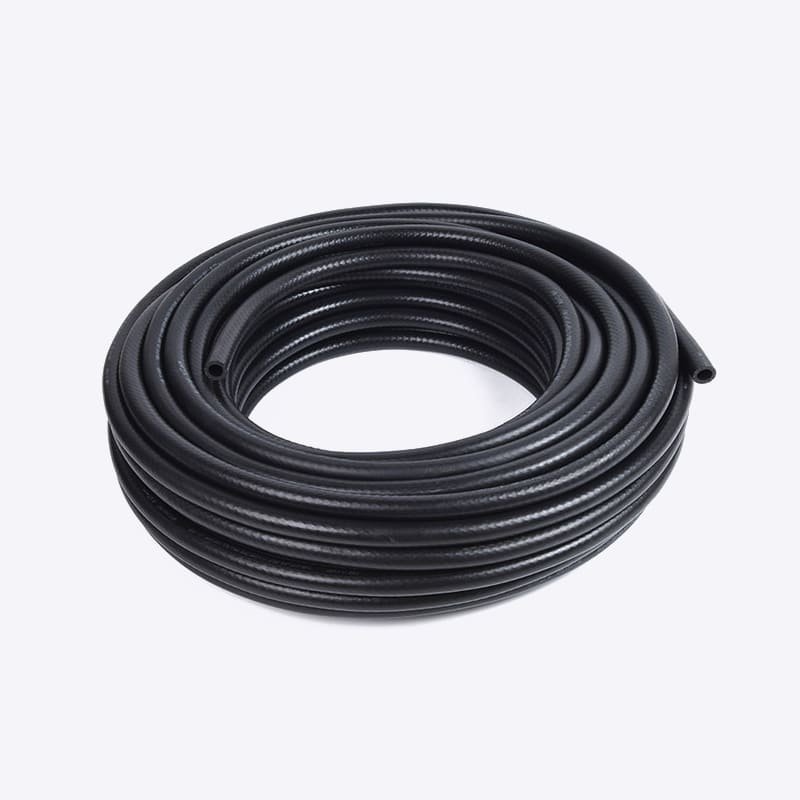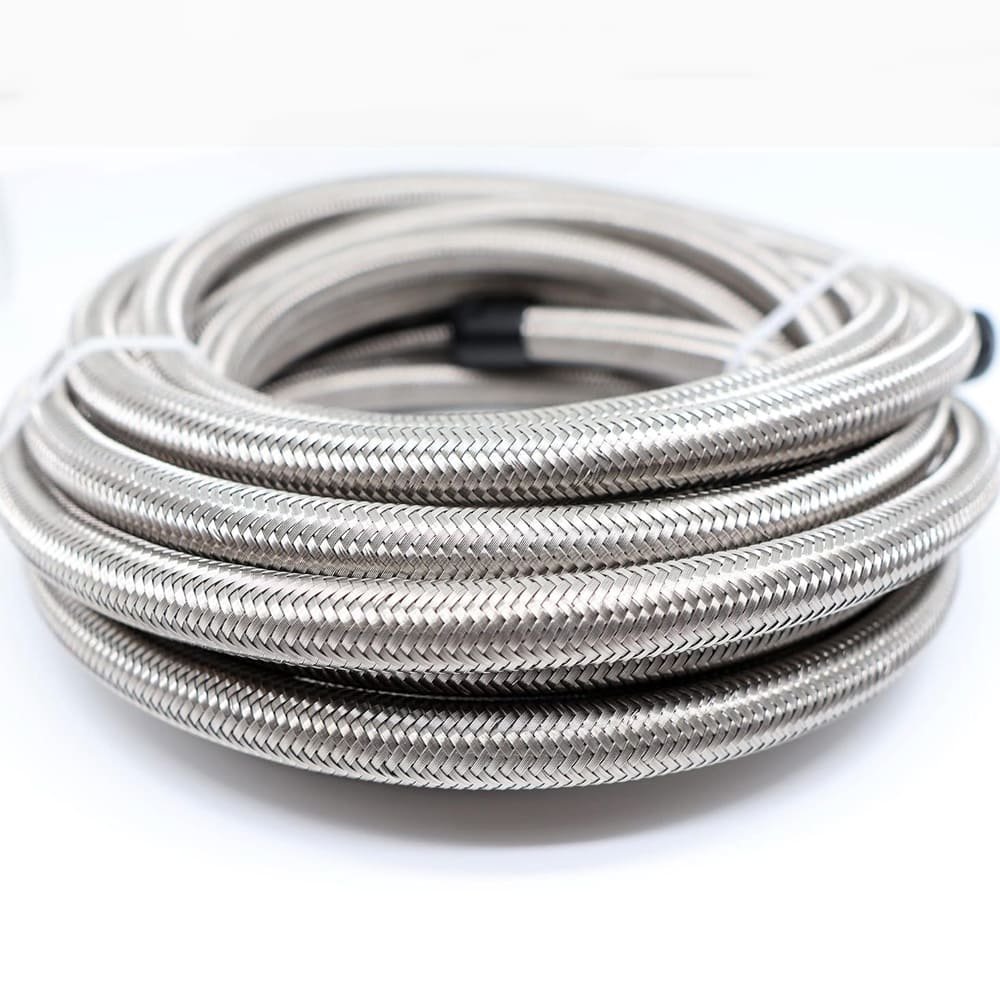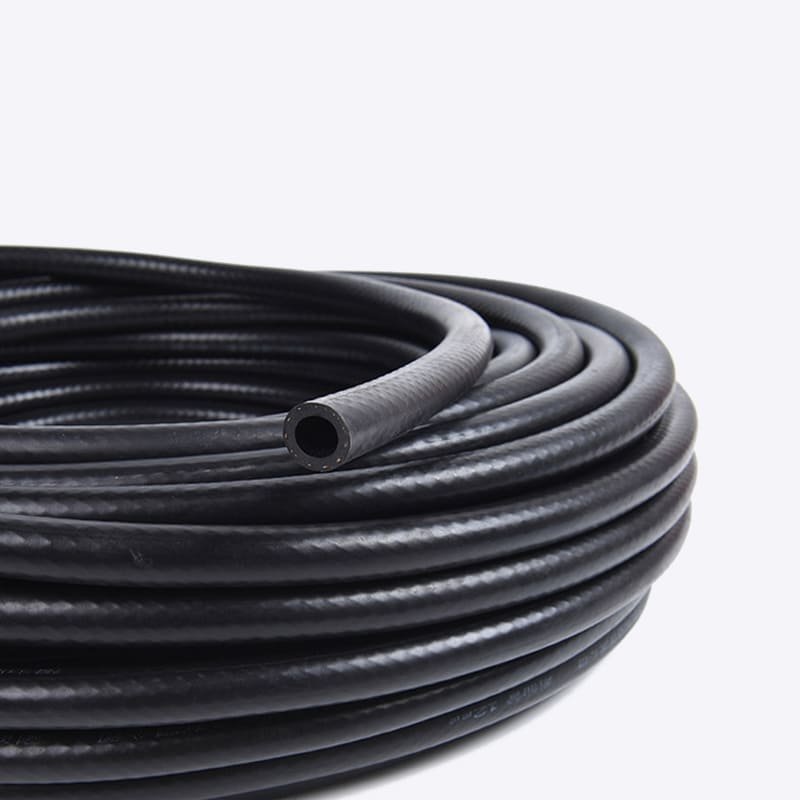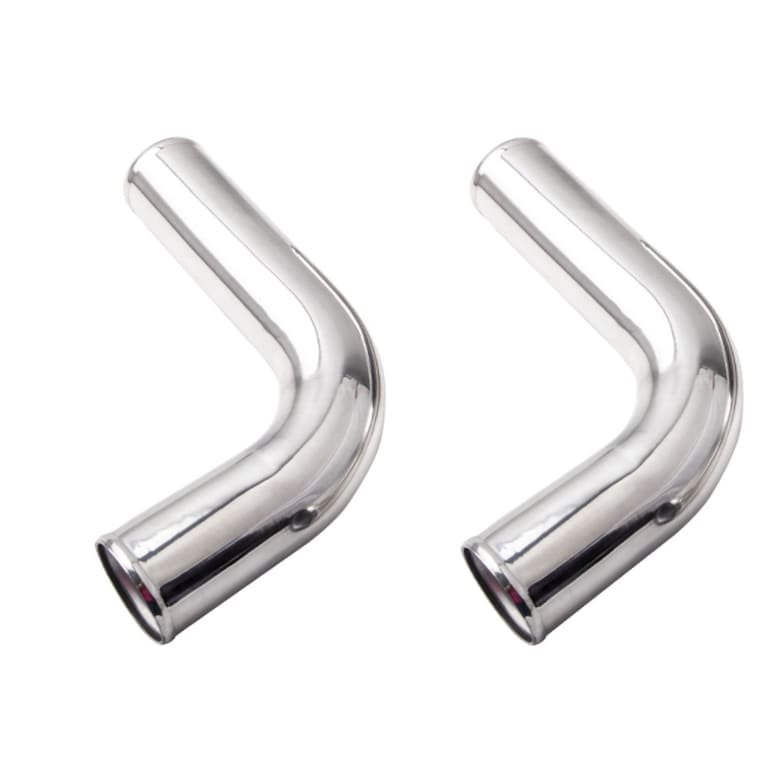Fuel hoses are widely used in various vehicle applications due to their resistance to corrosion, vibration, and abrasion. They safely and efficiently transport fuel from the tank to the engine. Understanding the types of fuel hoses and their advantages and disadvantages can help you make better decisions during vehicle maintenance, modifications, or when a problem arises. This article will provide a more detailed understanding of fuel hoses.
Fuel hoses, also known as fuel lines, are flexible or rigid tubes that safely transport fuel from a vehicle’s tank to the engine. These hoses must withstand the fuel, heat, and pressure to ensure efficient and safe fuel transfer. Unlike standard rubber hoses, fuel hoses meet stringent standards (such as SAE or ISO) to resist corrosion, leaks, and vapor loss.

What is the function of a fuel hose?
Fuel hoses are used in a variety of industries, including automobiles, motorcycles, construction machinery, agriculture, marine applications, and industrial power generation. They connect the fuel tank to the engine and allow fuel, such as gasoline and diesel, to flow where it is needed. Without the right hose, fuel flow becomes unstable, potentially leading to poor engine performance.
What type of fuel hose should I use?
Different fuel hose applications require different materials and constructions. Common options include:
Rubber Fuel Hose
Advantages: Highly flexible and soft, easy to install, with good elasticity and vibration resistance. Low cost, suitable for use in standard vehicles, and often used where flexible connections are required.

Disadvantages: Poor durability and aging. Long-term exposure to high temperatures, engine compartment ozone, and UV rays can cause the rubber to harden, crack, and bulge, ultimately leading to leaks.
Braided Nylon Hose
Advantages: The most widely used fuel hose type in modern passenger vehicles.
Lightweight, good flexibility, low permeability, and chemical resistance.
Disadvantages: While it can withstand engine compartment temperatures, it has a limited long-term temperature resistance and is susceptible to cuts and abrasions from sharp objects. In cold environments, its flexibility decreases and it may become brittle.
PTFE-Lined Hose
Advantages: This high-performance hose is commonly found in modified and high-performance racing vehicles. It features an ultra-smooth PTFE (polytetrafluoroethylene) liner and an outer stainless steel braid for protection and reinforcement.
It is corrosion-resistant to fuels like E85 ethanol gasoline, methanol, and racing fuel. It is heat-resistant and pressure-resistant, and has a stylish appearance.

Disadvantages: Unconventional price, high cost, and poor flexibility.
Metal Fuel Lines
Advantages: Durable and heat-resistant, typically lasts longer than hoses, heat-resistant, impermeable, and compatible with OEM designs.
Disadvantages: Poor flexibility, difficult to bend or adjust, difficult to install, and troublesome to repair or replace.
How Long Does a Fuel Hose Last?
The lifespan of a fuel hose is not fixed. It depends on a variety of factors, including the material, fuel type, and environmental exposure. It can range from as short as 2-3 years to over 10 years, or even the life of the vehicle.
What functions does a vehicle’s fuel line perform?
A fuel line’s function isn’t just to transport fuel. It also serves other functions, such as preventing vapor leaks. Maintain pressure in the fuel injection system.
Ensure clean, uncontaminated fuel reaches the engine.
Common Fuel Line Problems and Maintenance
Even with the best materials, fuel lines can develop problems with age and mileage:
Most Common Problems:
- Aging rubber hoses: Hardening, cracking, and bulging are the most common problems.
- Rust on metal hoses: Especially in humid areas, metal fuel lines can rust and perforate from the outside.
- Leaking joints: Loose clamps, deteriorating O-rings, and damaged quick-connect fittings can all cause leaks.
- Internal blockage: Long-term use can cause clogging of pipes, especially filters or small pipes, due to colloid or impurities.
Maintenance and Replacement Precautions
- Regular Inspection: During each maintenance session, inspect the fuel lines in the engine compartment and chassis for obvious cracks, bulges, oil stains, and wear. If you smell a strong and persistent gasoline odor inside or outside the vehicle, you must inspect it immediately.
- Timely Replacement: If you discover a problem with the fuel line, it must be replaced immediately.
- Professional Operation: Replacing a fuel line is a highly specialized task. When removing connectors, it’s important to release fuel system pressure beforehand. Failure to do so could result in fuel spraying, which is extremely dangerous.
- Use the Correct Parts: Always use high-quality fuel lines when replacing. Using the wrong material can lead to rapid failure and safety hazards. For example, never replace a specified nylon hose with a standard rubber hose. Contact us for specific advice. Our professional technicians will provide you with specific recommendations.
After replacement, ensure all connectors and clamps are properly installed and securely tightened. After installation, start the engine and check for leaks.
Fuel Line Applications
Fuel lines are used in a wide range of applications, primarily including:
- Traditional fuel vehicles: This is the primary application for fuel lines. Whether it’s a passenger car or a commercial vehicle (such as medium- and heavy-duty trucks and large buses),
- High-performance vehicles and racing cars: These vehicles place high demands on fuel lines for high-pressure resistance, reliability, and lightweighting, and typically use higher-quality materials, such as PTFE (polytetrafluoroethylene)-lined hoses or stainless steel braided fuel lines.
- Commercial vehicles and large machinery: Medium- and heavy-duty trucks and buses, due to their intense workload and harsh environments, place even stricter demands on fuel lines for durability, vibration resistance, and weather resistance.
- Industrial and small engines: Generator sets, construction machinery, agricultural machinery, marine engines, and garden equipment all require reliable fuel lines for their fuel systems, but different types may be selected based on specific pressures and other factors.
- Emerging vehicle technologies: Even hybrid electric vehicles (HEVs) require fuel lines as long as they have an internal combustion engine. Some fuel vapor lines and exhaust gas recirculation (EGR) system cooling lines may also utilize similar technologies and materials as fuel lines.
Summary
Fuel hoses are crucial for fuel delivery, and a variety of types are available to meet your diverse needs. It can safely and reliably transport fuel in environments with high temperatures, high pressures, vibrations, and chemical corrosion. Regular inspections, the use of compliant parts, and professional maintenance can ensure your driving safety.



